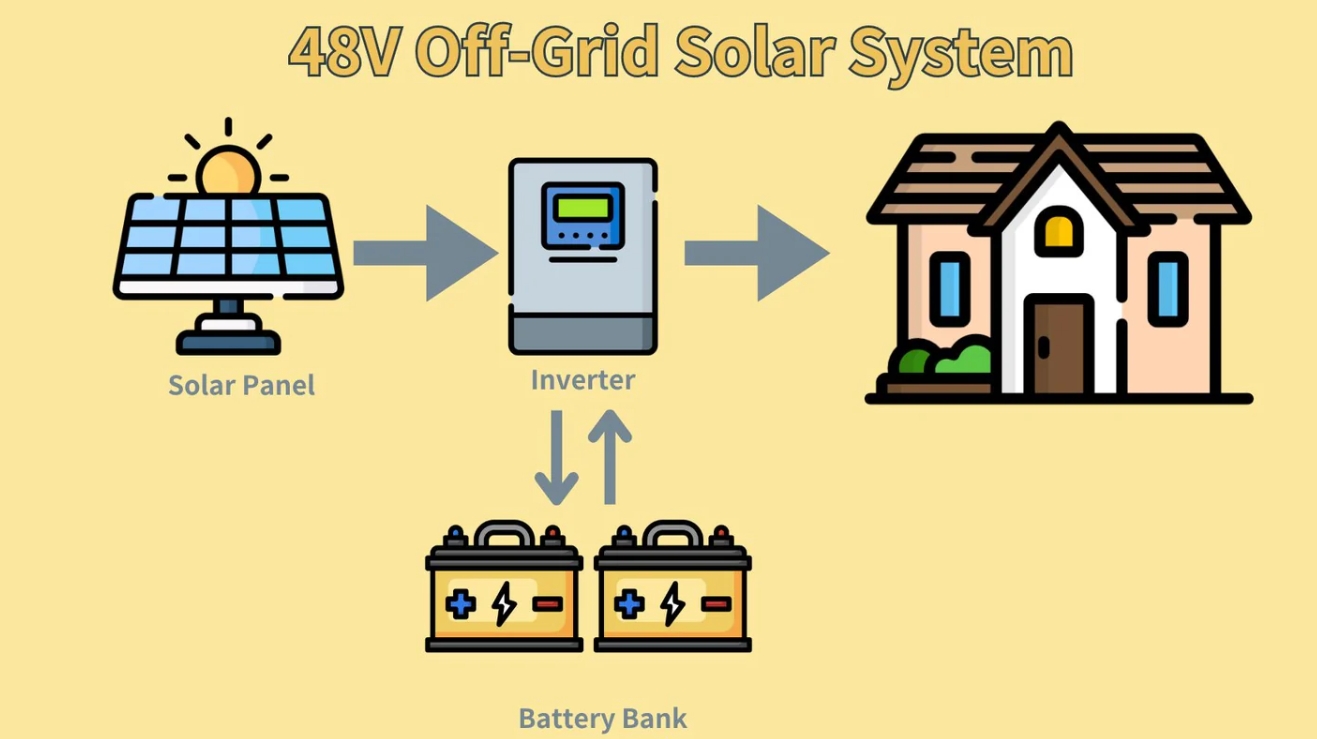Vnice Power
Battery Knowledge
How does the Off-grid Energy Storage System Work?
24/7/2024
What is an Off-Grid Energy Storage System?
An off-grid energy storage system operates independently of the utility grid. It is primarily used in areas without grid coverage or where the grid is unstable, utilizing solar power and batteries to achieve self-sufficiency. With the increasing demand for renewable energy, off-grid storage systems are gaining more attention. This article will detail the working mode of off-grid energy storage systems and their components.
Components of an Off-Grid Energy Storage System
An off-grid energy storage system mainly consists of the following parts:
Solar Panels: Convert sunlight into electricity and are the primary source of power for the system.
Storage Batteries: Store the electricity generated by the solar panels for later use.
Inverter: Converts the direct current (DC) from the storage batteries into alternating current (AC) for household or commercial use.
Charge Controller: Regulates the charging process of the batteries, preventing overcharging or over-discharging.
Backup Generator (optional): Provides additional power support during extreme weather or emergencies.
Working Mode of Off-Grid Energy Storage Systems
The working mode of an off-grid energy storage system mainly includes the following steps:
Solar Power Generation: During the day, solar panels absorb sunlight and convert it into electricity. The electricity is first used for immediate consumption, and the excess is stored in the storage batteries.
Energy Storage: The storage batteries store the excess electricity generated during sunny periods for use at night or on cloudy days. The capacity and efficiency of the batteries directly affect the system's stability and continuity.
Power Conversion: The inverter converts the DC from the storage batteries into AC, ensuring a consistent power supply for household or commercial equipment.
Energy Management: The charge controller continuously monitors the battery's charging status, preventing overcharging or over-discharging and extending the battery's lifespan.
Backup Power: During extreme weather or prolonged cloudy periods, if the solar panels and storage batteries cannot provide sufficient power, the backup generator will activate to supply additional electricity.
Advantages of Off-Grid Energy Storage Systems
Energy Independence: Off-grid systems operate independently of the utility grid, making them suitable for remote areas and places with unstable grid connections.
Cost Savings: In the long run, using solar power can significantly reduce electricity bills.
Environmentally Friendly: Off-grid systems primarily rely on solar energy, reducing dependence on fossil fuels and lowering carbon emissions.
Conclusion
Off-grid energy storage systems offer a self-sufficient energy solution with significant advantages, especially for remote areas and places with unstable grid connections. Through proper design and configuration, off-grid systems can provide stable and reliable power, meeting the electricity needs of households and businesses.
WE OFFER BEST IN CLASS SERVICE FOR YOUR NEEDS
86-13631354535

-

Message

